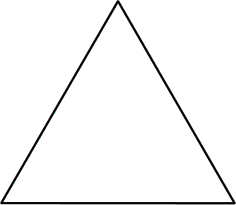09 NOV 2015 by ideonexus
 Physiological Decline in the Body When You Stop Exercising
Physiological Decline in the Body When You Stop Exercising
...regular endurance exercise leads to four major consequences:
Increased ability of the heart to eject blood
increased ability of the blood vessels to send blood to where blood is needed
Increased number of capillaries (the vessels that deliver oxygen and ‘food’ to the muscles)
increased size and the number of mitochondria (the “power plants” of the cells).
All these changes lead to the more efficient use of oxygen, as well as nutrients.
[...]
Pino considers a person who can run...07 APR 2015 by ideonexus
 Evidence on Creatine
Evidence on Creatine
Strong scientific evidence for this use
Enhanced muscle mass / strength: Several high-quality studies have shown an increase in muscle mass with creatine use. However, some weaker studies have reported mixed results. Overall, the available evidence suggests that creatine does increase lean body mass, strength, and total work. Future studies should include the effect of individual differences such as fitness levels, sex, and age.
Unclear scientific evidence for this use
Athletic performance...14 MAY 2013 by ideonexus
 HICT Sample Program
HICT Sample Program
The following is an example of a 12-station HICT program. All exercises can be done with body weight and implements easily acquired in almost any setting (e.g., home, office, hotel room, etc.). The exercise order allows for a total body exercise to significantly increase the heart rate while the lower, upper, and core exercises function to maintain the increased heart rate while developing strength.
Exercises are performed for 30 seconds, with 10 seconds of transition time between bouts. Tot...Series of 12 exercises to be performed 30 seconds each for a 7-minute total workout.
30 SEP 2011 by ideonexus
 Exercise Increases the Number of Mitochondria in Brain Ti...
Exercise Increases the Number of Mitochondria in Brain Ti...
Past experiments have shown persuasively that exercise spurs the birth of new mitochondria in muscle cells and improves the vigor of the existing organelles. This upsurge in mitochondria, in turn, has been linked not only to improvements in exercise endurance but to increased longevity in animals and reduced risk for obesity, diabetes and heart disease in people. It is a very potent cellular reaction.
[...]
Like muscles, many parts of the brain get a robust physiological workout during exer...A study on mice finds that exercise increases the production of mitochondria in brain tissue in addition to their production in muscle tissue (I dig the term "mitochondrial biogenesis" as describing the benefit).
03 SEP 2011 by ideonexus
 The Effects of Aging and How Exercise Counteracts Them
The Effects of Aging and How Exercise Counteracts Them
• Motor neurons die, particularly from age 60 onward. This causes connections between muscle fibers to wither — and that, in turn, eventually leads to loss and shrinking of muscle fibers. As a result, muscles get smaller and a person gets weaker, says Sandra Hunter, an associate professor of exercise science at Marquette University in Milwaukee. "Physical activity can offset some of that," she says. "But there is this biological aging process going on — the neurons will die regardle...A bullet point list of some of the physiological effects of aging and how exercise reverses these trends.




